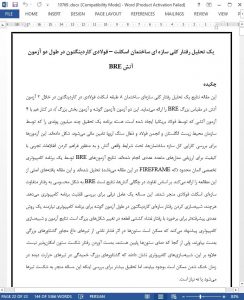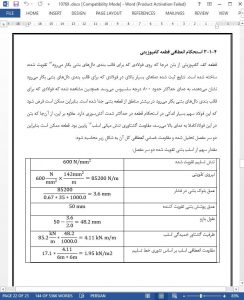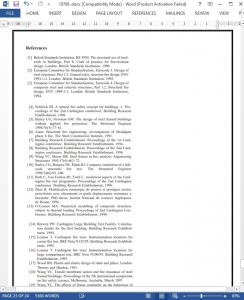Abstract
This paper presents the results of an analysis of the global structural behaviour of the 8-storey steel framed building at Cardington during the two BRE large-scale fire tests. These two tests (the Corner test and the Large compartment test), together with the four fire tests conducted by British Steel, formed the core programme of a multi-million pound research project sponsored by the UK's Department of Environment and the European Coal and Steel Community. These tests were carried out to investigate the performance of whole building structures under realistic fire conditions and to provide quality experimental information for the validation of various numerical models. The results of these two BRE tests were analysed using a specialist finite element computer program (to be referred to as FIREFRAME in this paper) and this paper presents the main findings of this study. Due to the difference in their fire intensities, the two BRE tests resulted in markedly different structural behaviour of the steel frame. This gives rise to an opportunity to check the capability of the computer program. The results of this analysis seem to indicate that FIREFRAME is capable of simulating flexural bending behaviour. However, in order for the program to simulate the Cardington frame behaviour during the Corner test, it requires a more advanced numerical procedure to deal with slab tensile membrane behaviour at large deflections. Test and computer simulation results suggest that columns may attain large moments as a result of being pushed by the adjacent hot beams, but as the test column temperatures were low, it was not possible to assess the column failure behaviour. Furthermore, computer simulations indicate that large sagging moments may develop in heated beams during cooling, but further research is required to check whether this would lead to beams failure.
1. Background to the Cardington project
The fire safety design of steel structures has undergone significant changes in recent years. It has advanced from the prescriptive approach based on the somewhat arbitrary standard fire resistance of individual structural members under idealised loading and boundary conditions, to a more rational approach which takes account of the more realistic fire and structural behaviour. This is evidenced by the publications of BS 5950 Part 8 [1], Eurocode 3 Part 1.2 [2] and Eurocode 4 Part 1.2 [3].
Using these rational design codes can often lead to a reduction in the required fire protection thickness to steel members, however, in most cases, since the temperature in a bare steel section will be higher than its limiting temperature, fire protection to structural steel members is still necessary. Owing to the high labour cost and increased construction time, the application of any fire protection can incur a high steel structure construction cost, thus steel’s full potential can only be achieved when the fire protection is completely eliminated. In this sense, although the recent intensive studies are intended to gain a better understanding of the fire performance of steel structures, there is a strong economic incentive behind using unprotected steelwork.
5. Conclusions
This paper presented an overview of the two BRE large scale fire tests in the 8-storey steel framed building at Cardington, and some results of an analysis of these tests using a finite element computer program developed by the author [9]. The Cardington tests provided a unique opportunity to study the behaviour of a complete building structure under realistic fire conditions. The test results are still being intensively analysed by a number of researchers, thus it is not possible to draw a comprehensive list of conclusions at this stage. This paper presents the results of the author’s analysis and the following tentative conclusions may be drawn:
1. During the Corner test, the Cardington steel building structure exhibited a large deflection behaviour that could not be modelled by pure flexural bending. It is concluded that numerical procedures capable of dealing with membrane action in the floor slabs at large deflections should be included.











